She bloomed in her adopted country of France while retaining a Chinese cultural core. Chitralekha Basu reports on a retrospective show of Lalan at Asia Society Hong Kong Center.
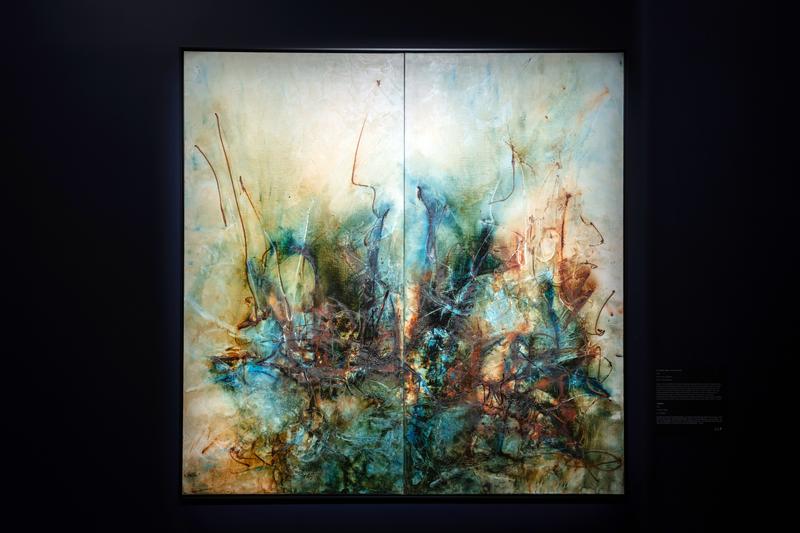 Go with the Wind, 1968, a diptych by the Chinese-French artist Lalan now showing at the Asia Society Hong Kong Center, seems powered by a cloudburst of restless energy. (PHOTO PROVIDED TO CHINA DAILY)
Go with the Wind, 1968, a diptych by the Chinese-French artist Lalan now showing at the Asia Society Hong Kong Center, seems powered by a cloudburst of restless energy. (PHOTO PROVIDED TO CHINA DAILY)
Born Xie Jing-lan in Guiyang, China, in 1921, Lalan turned to painting only in her mature years. And her works were not seen as high-value collectibles until some years after her death in a car accident in 1995.
“Lalan was under her first husband Zao Wou-ki’s shadow,” says S. Alice Mong, executive director of Asia Society Hong Kong Center, where a retrospective show of the Chinese-French artist’s works is taking place.
Having a famous, and sought-after, painter for a partner may not always be the ideal setup for a woman who is herself artistically inclined. And so it was with Lalan.
Eventually, she separated from the husband with whom she had shared a school (Hangzhou National College of Art, now China Academy of Art) and settled down in Paris — looking to absorb some of the finest artistic ideas, and techniques, circulating in Europe’s cultural nerve center in the postwar years.
She would marry the musician and sculptor Marcel Van Thienen in 1958. And yet, it wouldn’t be until the 1970s when Lalan, who studied music at Hangzhou and trained in the Martha Graham technique of dance after arriving in Paris in 1948, began combining her skills — in music, dance and wielding the brush — and giving performances to small groups of audiences in community cultural centers.
“Lalan integrated the arts,” says Mong. “Nowadays we take integrated art for granted, but she was doing that in the 1970s.”
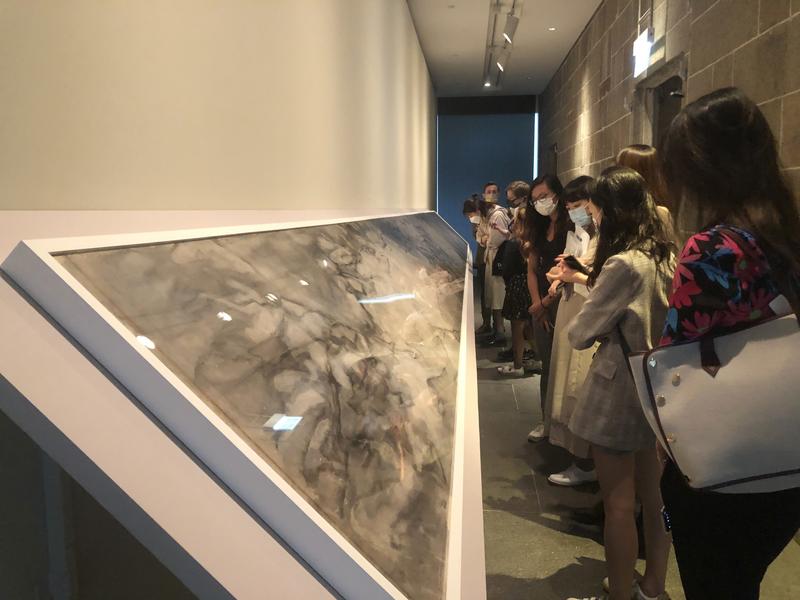 Lalan’s landscape painted on a scroll takes up an entire room at the Asia Society Hong Kong Center. (PHOTO PROVIDED TO CHINA DAILY)
Lalan’s landscape painted on a scroll takes up an entire room at the Asia Society Hong Kong Center. (PHOTO PROVIDED TO CHINA DAILY)
Painting with the body
The Lalan show at ASHK is the fourth in a series of works by 20th-century women Chinese artists. Artists featured in previous editions include Fang Zhaoling, Pan Yuliang and Irene Chou. The idea, says Mong, is to revisit works by women who were active in the same period as the internationally acclaimed Chinese master painters such as Wu Guanzhong, Chu Teh-chun and Zao, “but weren’t appreciated in their lifetime.”
Doris Poon, ASHK associate curator, who co-curated the show with Veronique Bergen, adds that the series is “essentially about women who overcame the challenges of their time to shine as artists. Also we explore their connection with overseas cultures.”
In this league of remarkable women, Lalan is uniquely distinguished. Not only did she relentlessly experiment with different forms of artistic expression, but she also managed to put them all into the same exhibition space. It was as if the cloudburst of restless energy that she had poured into paintings like Go with the Wind, 1968, in the early stage of her painting life, could not be contained any longer within the finite space of a canvas. So Lalan worked her own body like a moving paintbrush, continuing the journey from where her painting had left off through dance and music.
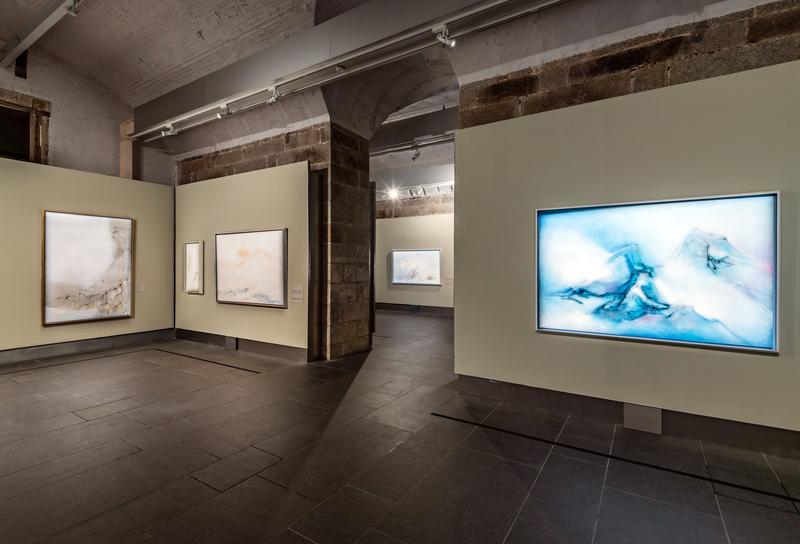 An installation view of Lalan’s works at the Asia Society Hong Kong Center. (PHOTO PROVIDED TO CHINA DAILY)
An installation view of Lalan’s works at the Asia Society Hong Kong Center. (PHOTO PROVIDED TO CHINA DAILY)
“I think one of the interesting things about Lalan is the way she keeps expanding her oeuvre, exposing herself to different artistic thoughts and also experiments with artistic mediums,” says Poon. “In an artistic career spanning four decades she kept challenging herself in different mediums and at the same time tried learning from different masters and was inspired by different artists.”
Lalan celebrated her friendship with those who helped steer her artistic journey in some of her paintings. She had met the music composer Edgard Varese (1883-1965) through the Belgian poet Henri Michaux (1899-1984) and paid homage to both in her works. To Edgard Varese, 1985, invokes the musician’s composition, Deserts. It’s a bare golden landscape with hints of a storm brewing at its center. Remember Henri Michaux, 1984, shows an apparently tranquil landscape done in soft, soothing colors except for the rippling waters in the foreground where the turbulence, and mystery, are concentrated.
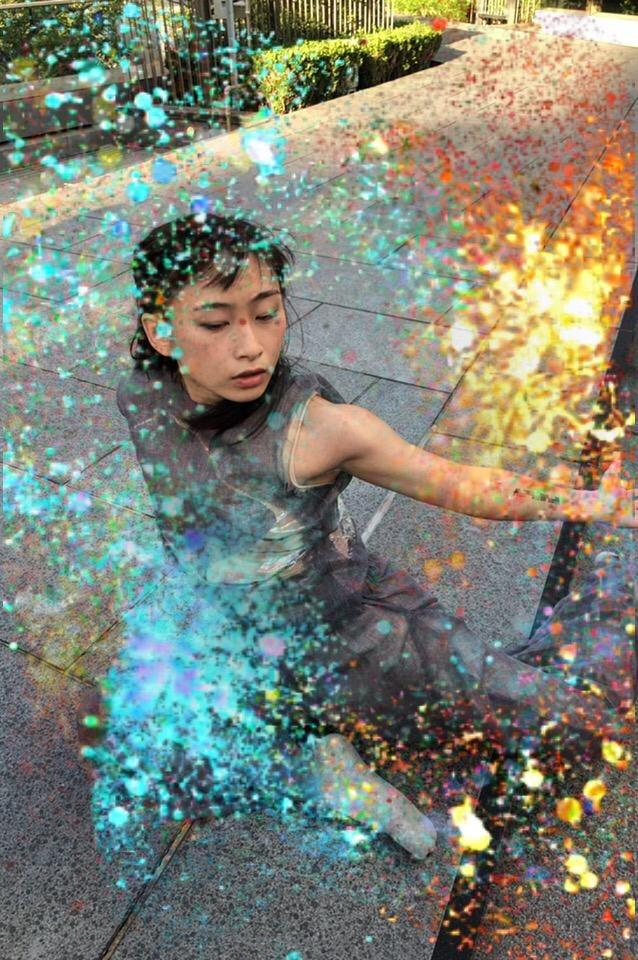 An Allen Lam choreographed dance inspired by Lalan’s works, as seen through an augmented-reality app. (PHOTO PROVIDED TO CHINA DAILY)
An Allen Lam choreographed dance inspired by Lalan’s works, as seen through an augmented-reality app. (PHOTO PROVIDED TO CHINA DAILY)
The Chinese touch
Although Lalan left China in her mid-20s and came into her own as an artist only in France, her adopted country, her core artistic sensibilities remained noticeably Chinese. In the video of her last recorded performance, Lalan is seen practicing qigong — a traditional Chinese form combining physical movement with breathing and meditation. Her moves bring to mind the swirling splashes of paint bespattering the canvas in her later paintings, creating dark unknowable shapes in earth tones in the process.
The influence of the East is also apparent in the presence of Chinese calligraphy, literati features and Daoist philosophy in her paintings — ideas she made her own and served up in her inscrutable, singular style.
“There is an element of calligraphy in some of her most iconic paintings,” says Tiffany Law, assistant curator at the ASHK. “It’s in Duel of Words, Quarrel between Light and Dark, 1963. You see the brush strokes mimicking the calligraphic act. There are traces of a Chinese character, but it’s not very well etched, more like a symbol.”
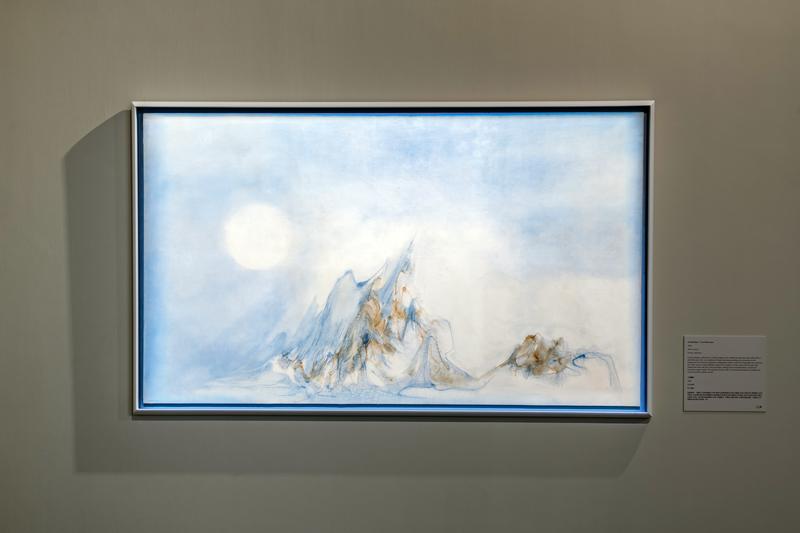 In At Full Moon, 1984, Lalan puts a spin on the realistic depiction of nature. (PHOTO PROVIDED TO CHINA DAILY)
In At Full Moon, 1984, Lalan puts a spin on the realistic depiction of nature. (PHOTO PROVIDED TO CHINA DAILY)
She points out how the painting looks like an approximation of the yin-yang symbol. The canvas is divided into black and white halves, informed by the Daoist idea of binaries complementing each other.
The idea is less obvious in a painting called On the High Pass, 1979, in which faint outlines of mountain ranges appear against a pale background. Much of the canvas is left blank, while the image seems lit by its ambient luminosity.
A keen onlooker, however, might be able to appreciate the contrast between “the accent and the void,” says Law. Although it looks empty, the painting, she says, represents “a complete landscape, including all the elements around us… like air and mist.”
At Full Moon, 1984, makes a fine companion to High Pass. This too is a mountain landscape in pale colors with a huge full moon as the focal point. Both paintings are replete with literati features, as seen in their play with perspectives and tweaking of natural forms.
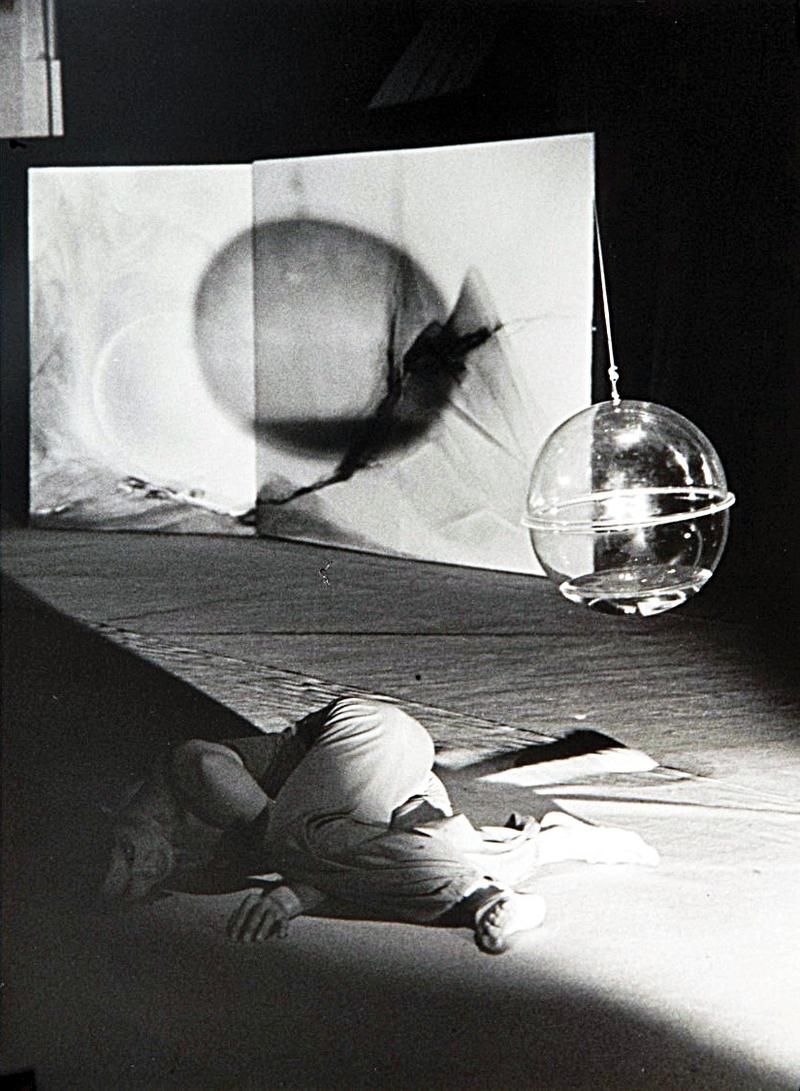 Lalan was among the early practitioners of integrated arts, combining music, dance and painting in her performances. (PHOTO PROVIDED TO CHINA DAILY)
Lalan was among the early practitioners of integrated arts, combining music, dance and painting in her performances. (PHOTO PROVIDED TO CHINA DAILY)
Through the lens of time
Although the passionate intensity and tonal depths in Lalan’s early paintings seem to resonate with the sensibilities of Zao, both Law and Poon insist Lalan’s style was distinct from that of her illustrious first husband.
“The early resonances were because of their shared cultural background. Both were from eastern China,” says Law. Then “while Zao trained to be a painter, Lalan was completely self-taught.”
She goes on to add that Lalan’s works are often marked by rhythm and a thematic unity while Zou’s have more to do with abstract expressionism.
Since the last 20 years or so, Lalan is no longer a stranger to collectors of 20th-century Chinese art. Her stock rose after the likes of Shanghai Art Museum (now China Art Museum) and Musee d’Art Moderne de la Ville de Paris started collecting her works. Two years back Sotheby’s Hong Kong dedicated an auction exclusively to Lalan.
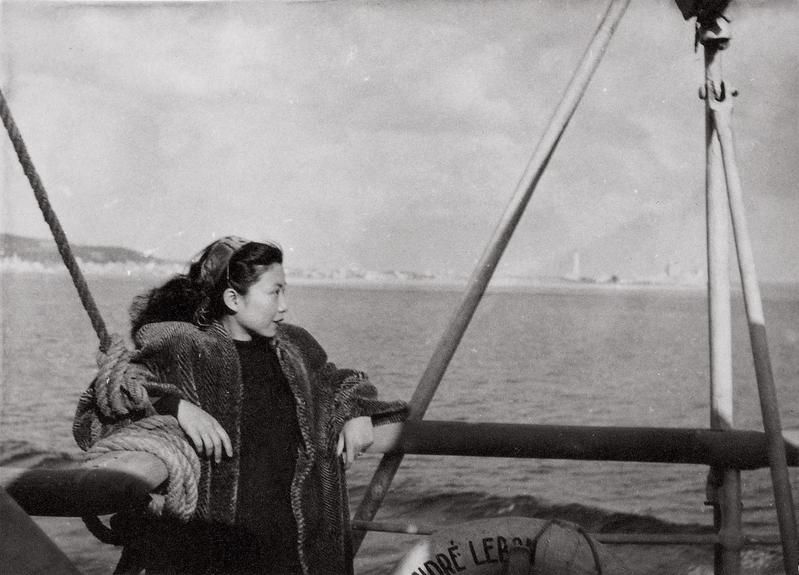 A file photo of young Lalan, then called Xie Jinglan, sailing to Paris. (PHOTO PROVIDED TO CHINA DAILY)
A file photo of young Lalan, then called Xie Jinglan, sailing to Paris. (PHOTO PROVIDED TO CHINA DAILY)
Poon says the point of hosting a solo show by an artist who is no longer under the radar is to encourage viewers to read Lalan’s paintings in the socio-historical context in which they were created and wonder about their significance today.
“We would like audiences to rethink the value of popular names in the art market. We have tried to expand the academic discussion on Lalan’s works,” she says, referring to the panels featuring art scholars, curators and gallery owners that ASHK has organized. Allen Lam was invited to choreograph a new dance composition in response to the video of Lalan’s 1995 performance. The piece was performed in the striking outdoor spaces of the ASHK building.
It’s all part of a concerted effort to acquaint more people with the legacy of a free-spirited artist who remained in relative obscurity during her lifetime.
If you go
Extended Figure: the Art and Inspiration of Lalan
Dates: Through Sept 19
Venue: Chantal Miller Gallery, Asia Society Hong Kong Center, 9 Justice Drive, Admiralty
asiasociety.org/hong-kong/exhibitions
Contact the writer at basu@chinadailyhk.com


